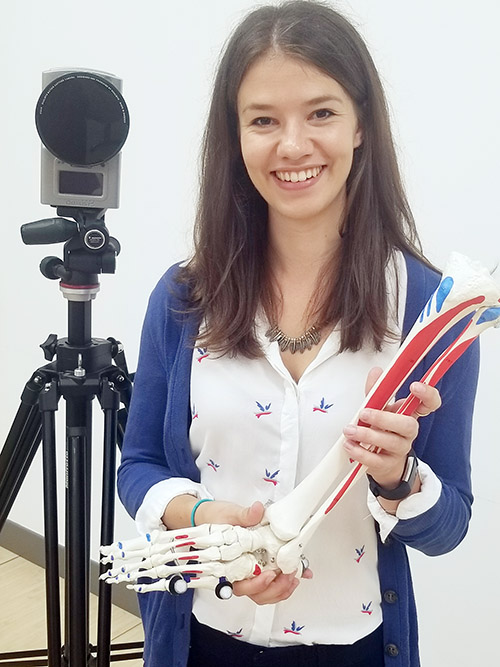A step in the right direction
October 1, 2018
Share
New research from Queen’s University PhD candidate Lauren Welte is challenging traditional thinking on the function of the human foot. Her latest project could impact the way orthotics are designed and people are treated for a number of foot conditions, including plantar fasciitis.
“We investigated how modifying the shape of the arch of the human foot affects the energy absorbed and returned during a dynamic compression,” says Ms. Welte. This work is part of an international and multi-disciplinary collaboration between Ms. Welte and her mentor Dr. Michael Rainbow at Queen’s University, as well as Dr. Glen Lichtwark and Dr. Luke Kelly at the University of Queensland in Brisbane, Australia.

“This collaboration took advantage of new technology that has allowed us to investigate conventional thinking around the foot.”
To change the shape of the arch, the researchers elevated the toes to engage the windlass mechanism of the plantar fascia, a flat band of tissue that connects the heel bone to the toes. The windlass mechanism is an important part of normal foot function and causes the arch to be higher, but shorter in length.
Ms. Welte says that prior research had shown the foot became stiff during the engagement of the windlass mechanism, which was first described in 1954 after physical examination of people’s feet. Using advanced technology that allows for 3D modelling of the foot, her new research shows the foot actually becomes more pliable and that could have an impact on the design of orthotics, footwear, and even prosthetic limbs.
The research was completed in the Human Mobility Research Centre in Kingston, Ontario, and the School of Human Movement and Nutrition Sciences at the University of Queensland in Australia. The researchers received support from NSERC and the Australian Research Council to conduct this work.
“This is the first step in our research,” says Ms. Welte. “We want to take these results and see how the windlass mechanism affects how the arch manages energy absorption and return while walking and running. The new Skeletal Observation Lab in Hotel Dieu Hospital will allow us to use x-ray and high-speed cameras to answer these questions.”
The paper is currently on the ‘top read’ list in the Journal of the Royal Society Interface.